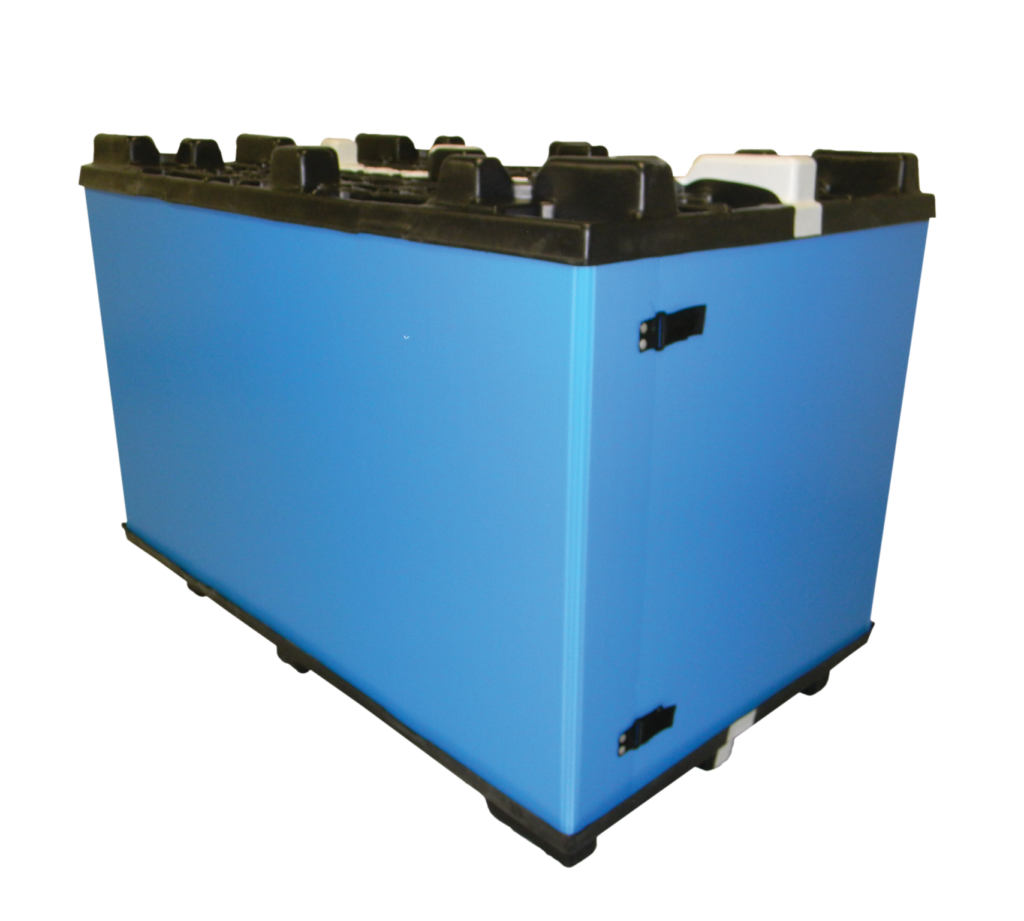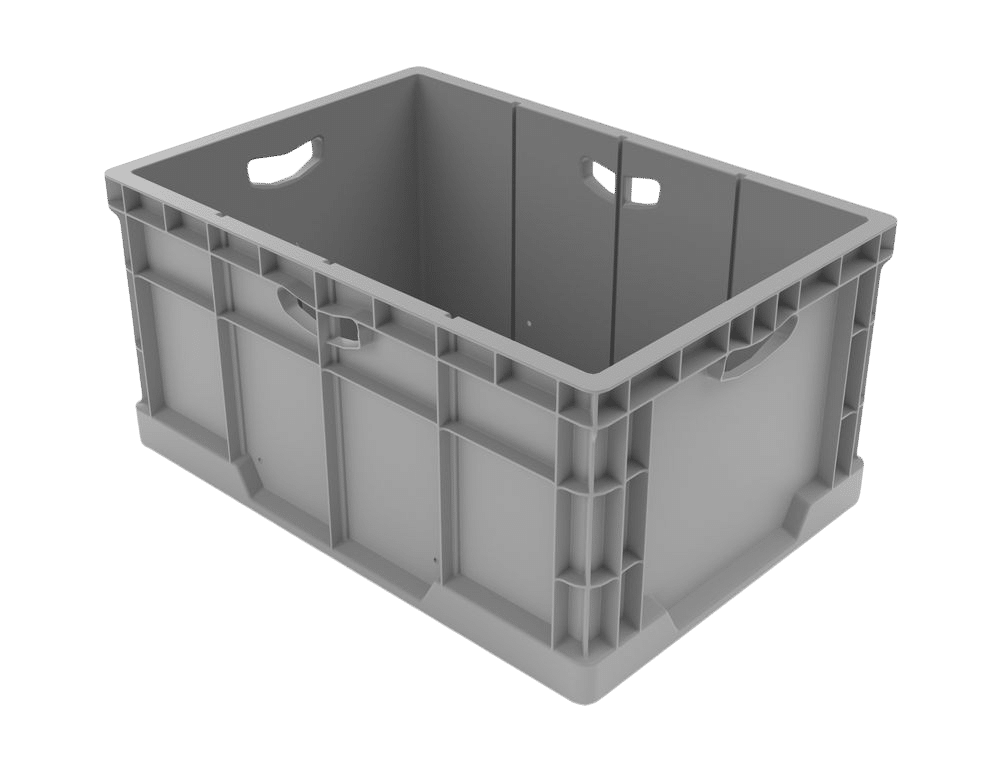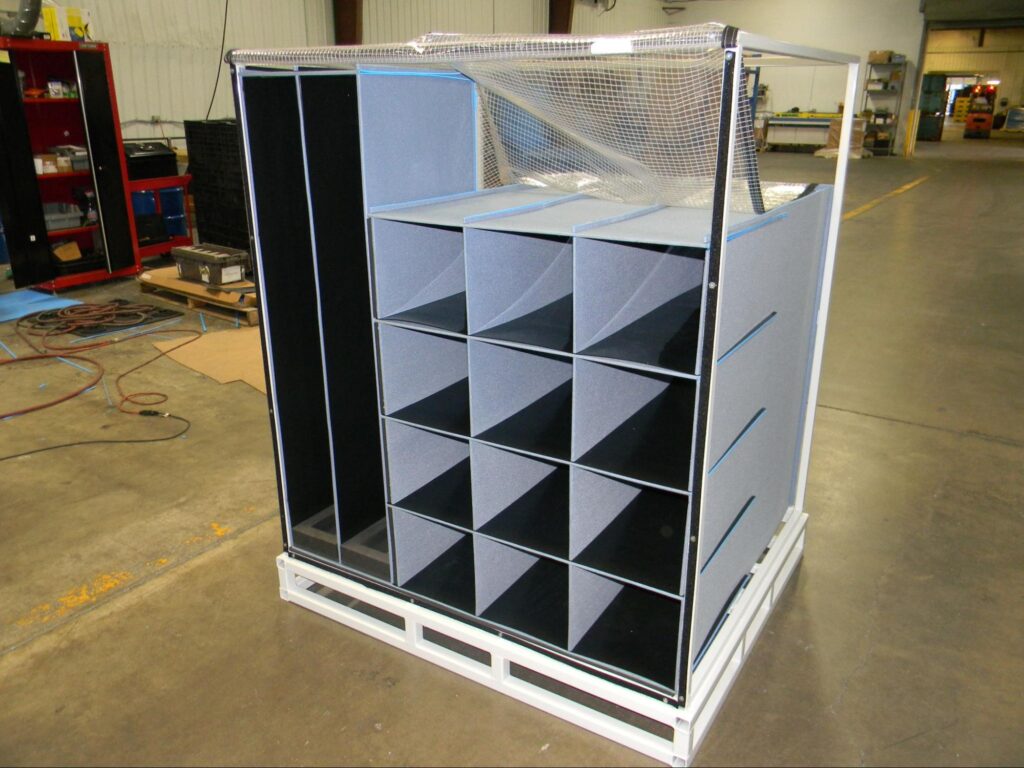In today’s fast-paced, quality-driven industries—from automotive and electronics to medical and pharmaceuticals—the need to protect sensitive components during transit is paramount. Damaged parts lead to costly delays, operational disruptions, and quality control issues. While returnable packaging provides a sustainable framework, its true value is only realized when the products inside are secure. This is where interior dividers make a significant impact, providing structured compartments that prevent costly damage from impacts and abrasions and transform a simple container into a high-performance logistics tool.
These essential inserts create individual cells for each item, preventing components from shifting, colliding, or scratching one another while optimizing every inch of container space. In industries where even a minor flaw can result in significant loss, this level of organization is critical.
By securing products for safe handling and quick quality checks, interior dividers do more than just protect—they promote lean operations and support just-in-time (JIT) manufacturing. In this guide, we’ll explore the benefits, types, and best practices for using interior dividers to elevate your packaging strategy.
The Core Benefits of Interior Dividers
Integrating interior dividers into your packaging strategy delivers tangible advantages that extend across the entire supply chain. By moving beyond simple containment to structured protection, these inserts create significant value in several key areas:
- Drastic Reduction in Product Damage: By securely compartmentalizing items, dividers eliminate the risk of collisions, scratches, and impact damage during transit. This directly cuts replacement and repair costs while boosting product reliability and customer satisfaction.
- Improved Operational Efficiency: A well-organized container means faster packing, unloading, and inventory counts. With a designated spot for every part, your team saves valuable time and labor at every stage of the handling process.
- Optimized Space and Shipping: Dividers maximize the use of interior container space, allowing more parts to be shipped in a single container. This increases shipping density, which reduces transportation costs and shrinks your operation’s carbon footprint.
- Enhanced Quality Control: Consistent and orderly presentation of components simplifies visual inspections for quality assurance. This helps maintain product integrity from the factory to the assembly line.
- Support for Lean Manufacturing: By designing an interior divider system that optimizes container space and reduces waste, you can achieve significant savings in transportation costs, storage costs, and disposable packaging materials like foam peanuts or bubble wrap.
Ultimately, these benefits translate directly into a stronger bottom line and a smaller environmental footprint. By preventing costly product scrap and reducing packaging waste, interior dividers are a strategic investment in both operational excellence and corporate sustainability. The savings in time, materials, and transportation can then be reinvested into other critical areas of your business, such as research, development, and process improvements.
Choosing the Right Interior Divider: Types and Materials
Not all dividers are created equal. The ideal choice depends on your product’s specific characteristics, your supply chain’s demands, and your budget. Selecting the right material is critical for ensuring product safety, longevity, and overall cost-effectiveness. Here’s a breakdown of the most common divider types and when to use them.
Corrugated Plastic Dividers
Made from lightweight yet remarkably durable plastic, these dividers are a versatile workhorse in reusable packaging. They are resistant to moisture, chemicals, and physical impact, providing robust protection across countless shipping cycles. For added security, they can be enhanced with anti-scuff or anti-static properties.
- Ideal For: A wide range of general-purpose applications, from delicate electronic components to rugged automotive parts. Their durability makes them the perfect choice for closed-loop systems that require a long-lasting, reusable solution.
Foam Dividers
When cushioning and shock absorption are the top priorities, foam dividers are the answer. Made from materials like crosslinked polyethylene (XLPE) or expanded polyethylene (EPE), these dividers can be precisely cut and tailored to cradle fragile or irregularly shaped items, preventing damage from vibration and impacts.
- Ideal For: Protecting highly sensitive or delicate products, such as medical instruments, glass components, and complex electronic assemblies. They provide a secure, custom-fit nest that absorbs energy during transit.
Laminated Dividers
Laminated dividers combine the structural integrity of a durable core (like corrugated plastic) with a soft, non-abrasive surface material like Tyvek or brushed nylon. This creates the perfect balance of strength and gentle handling.
- Ideal For: Protecting Class-A surfaces, polished metals, or painted components that cannot tolerate even the smallest scratch. Their smooth, easy-to-clean surface also makes them essential in sterile or hygienic environments common in the medical and pharmaceutical industries.
Cardboard and Paperboard Dividers
As a cost-effective and lightweight solution, cardboard or paperboard dividers are an excellent choice for certain applications. While not as robust as plastic or foam, they offer effective compartmentalization and can be treated with moisture-resistant coatings to extend their utility.
- Ideal For: Short-term use, one-way shipping, or internal plant handling where budget is a primary consideration and extreme durability is not required.
Integrated or Molded Dividers
For maximum stability and longevity, integrated or molded dividers are built directly into the structure of a container. Because they are part of the container itself, there are no loose parts, making them incredibly durable and ideal for automated processes.
- Ideal For: High-volume, repetitive packaging tasks where the product dimensions are consistent and unchanging. While less flexible, their robust design is unmatched for long-term, heavy-duty use.
Interior Dividers in Action: Industry-Specific Solutions
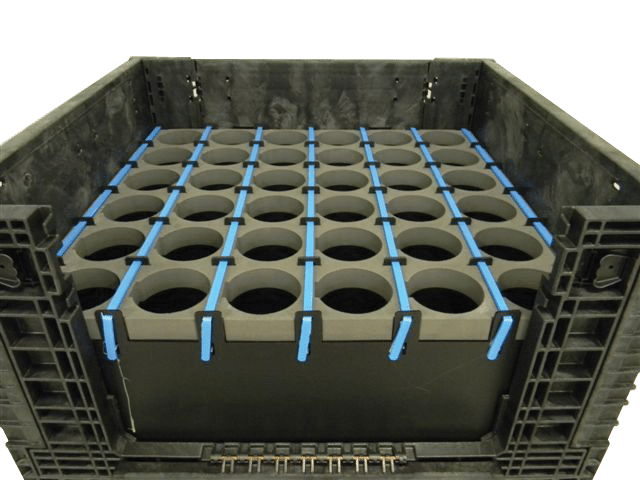
Interior dividers can be customized for different sectors:
- Automotive and Transportation: Components such as electronic modules and polished trims demand careful handling. Foam dividers are often used to minimize surface scuffs on interior panels. Meanwhile, automotive returnable transport packaging solutions help streamline supply chains.
- Electronics and High-Tech: Sensitive electronics require protection from both physical damage and static discharge. Anti-static foam inserts and precise compartmentalization safeguard circuit boards and microchips.
- Medical and Pharmaceutical: Maintaining sterility is integral. Laminated corrugated plastic dividers or similar materials can be cleaned easily, ensuring compliance with strict regulations. Adding antimicrobial coatings further protects sterile instruments and pharmaceuticals.
- Appliance Manufacturing: Bulky appliance parts benefit from custom dividers that prevent surface scratches. Foam-laminated partitions keep stainless steel panels or glass interfaces pristine during transit.
- Food and Beverage: Dividers must meet food-grade standards, emphasizing cleanliness. Corrugated plastic with sanitary coatings aids both product protection and efficient inventory rotation.
Practical Guidelines for Choosing and Testing Interior Dividers
Selecting the best interior divider solution involves a structured approach:
- Understand Your Product and Process: Review product characteristics like size, weight, fragility, and special handling requirements.
- Evaluate Material and Design Options: Match divider types to anticipated conditions. Fragile components may need anti-static foam, while sturdier goods could use corrugated plastic.
- Prototype and Test: Create a small-scale model under realistic conditions to check durability, fit, and loading procedures. Adjust as necessary.
- Review Scalability and Workflow Integration: Ensure the chosen design adapts easily to various packaging forms and shipment volumes.
For companies seeking flexible arrangements, lease & rental options provide an alternative to owning all containers.
From Concept to Container: The Custom Design Process
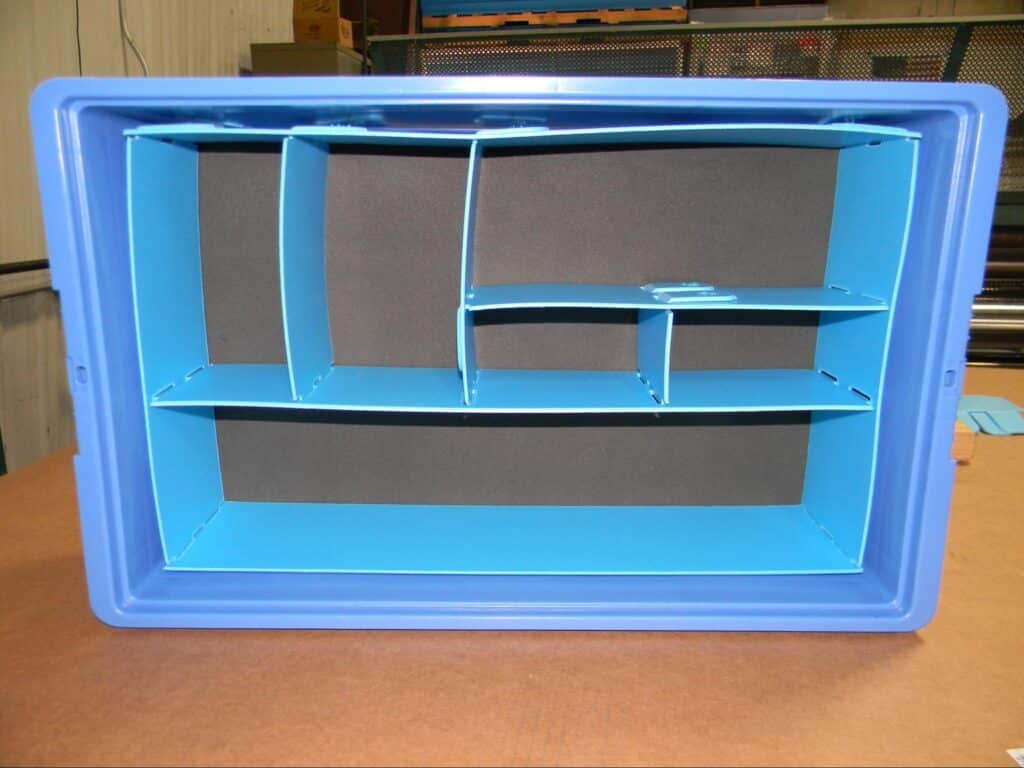
Off-the-shelf solutions rarely work for specialized components. Your parts have unique dimensions, weight, and handling requirements, which is why a custom-fit interior divider is essential for optimal protection. At Universal Package, we’ve refined a collaborative design process to transform your unique challenge into a precise, effective packaging solution.
It all begins with understanding your product and process. Our engineering team works directly with you to analyze your components—using everything from CAD files to physical part samples—to map out critical factors like surface sensitivity, weight distribution, and required clearance. From there, we design and craft a precision-fit prototype.
This isn’t a guess; it’s a tangible solution you can hold and test. You get a physical sample to place in your containers and test with your actual components in your facility. This critical step eliminates guesswork and allows us to refine the fit and material choice, ensuring the final design is perfectly optimized for protection, ergonomics, and efficiency before full-scale production begins.
The Business Case: The Future of Efficient Packaging
Beyond simple protection, interior dividers present a powerful business case built on immediate returns and future-proof innovation. The financial and operational benefits are clear from day one. By slashing costs associated with returns, repairs, and product scrapping, dividers directly protect your bottom line.
At the same time, optimizing container space boosts shipping density, which lowers transportation expenses and reduces your carbon footprint. This creates a dual benefit where sustainable practices drive financial performance, reducing waste from single-use fillers while aligning with corporate responsibility goals.
While these immediate returns are compelling, the evolution of interior packaging promises even greater value. As businesses push for smarter and more efficient supply chains, several key trends are emerging:
- Advanced Sustainable Materials: The future is green. Innovations in bio-based polymers and the use of fully recycled materials are making it easier than ever to create durable, reusable dividers that are also environmentally responsible from cradle to grave.
- Modular and Collapsible Designs: The next wave of efficiency focuses on optimizing return logistics. Modular and collapsible divider systems are being developed to fold down flat, drastically reducing the space needed on return trips and further cutting shipping costs.
- The Rise of Smart Packaging: Perhaps the most significant evolution lies in the integration of technology. We are moving toward a future where “smart dividers” embedded with low-cost sensors can provide real-time data on temperature, humidity, and impacts. This transforms packaging from a passive container into an active guardian of quality, allowing companies to move from reactive damage control to proactive quality assurance—a game-changer for high-value industries like pharmaceuticals and electronics.
Maximizing Value and Sustainability with Interior Dividers
Interior dividers are a vital component of modern, reusable industrial packaging. They reduce damage, streamline workflows, and support sustainability objectives—helping businesses meet quality standards while controlling costs. Whether you produce automotive parts, electronics, medical devices, or food products, you can customize divider materials and designs to fit your exact needs.
To learn more about best practices in packaging and discover further strategies, visit our specialized packaging blog. Ready to transform your packaging process? Contact Universal Package today to identify tailored interior divider solutions for your operational challenges and sustainability goals.


